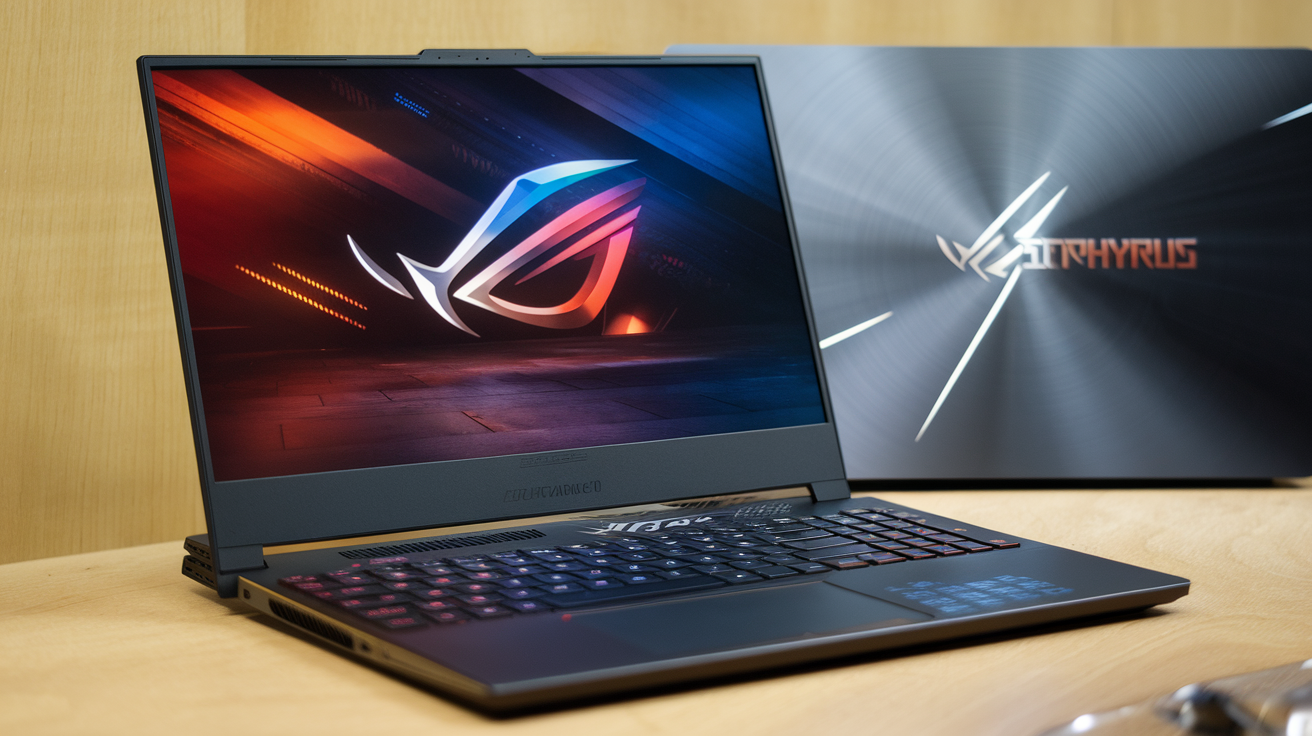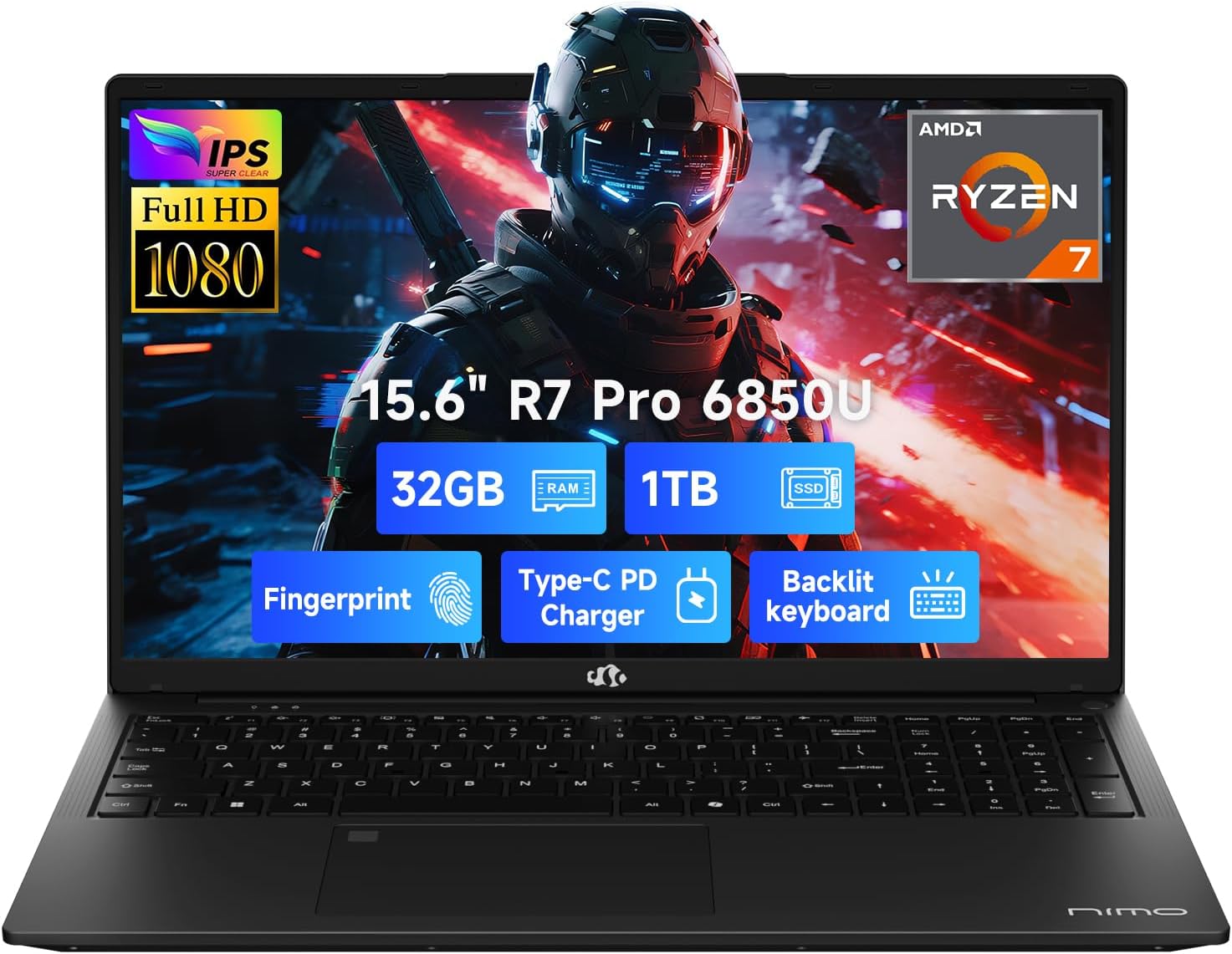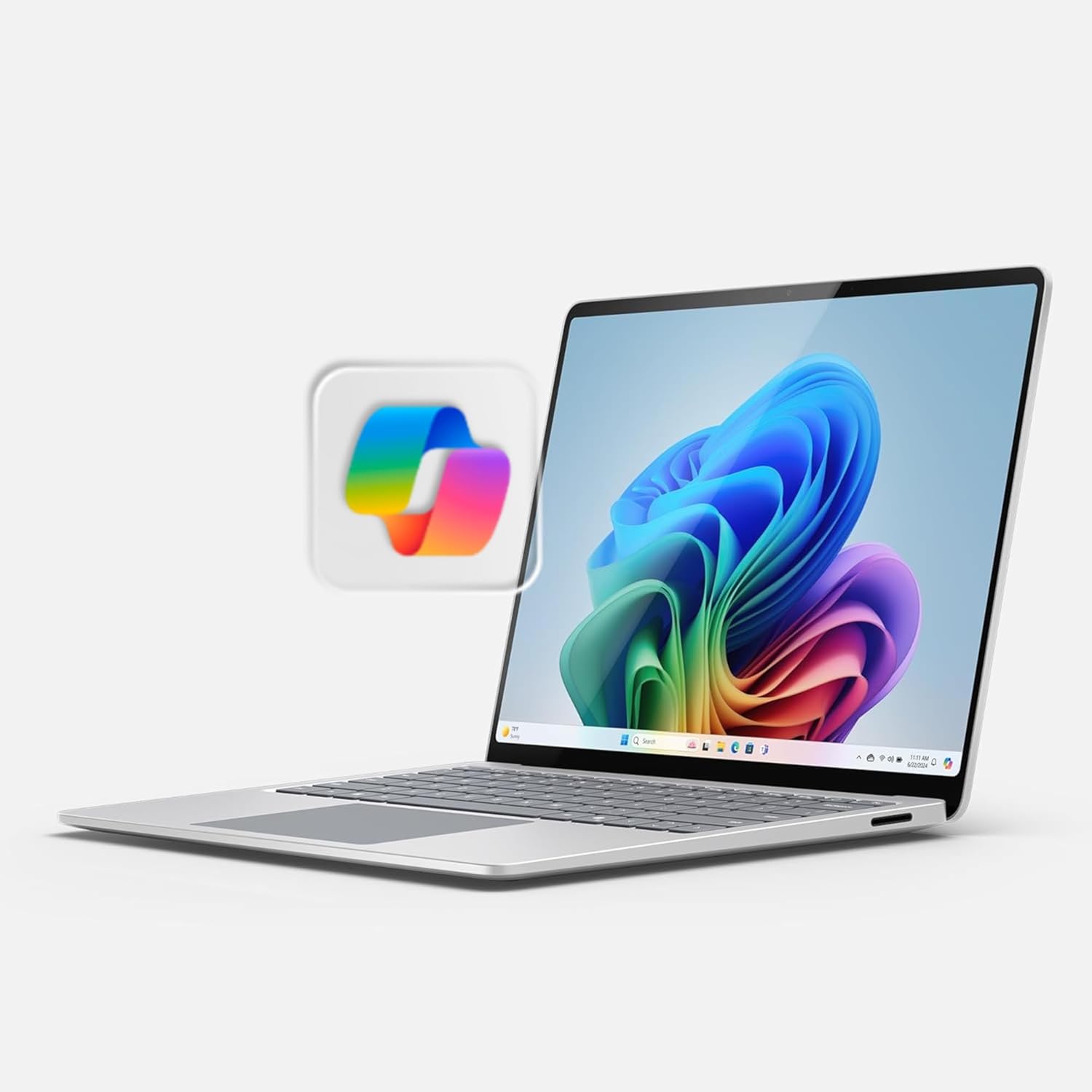I once tried stuffing a brick of a gaming laptop into my backpack and nearly threw my back out—never again. Enter the Asus Zephyrus G16 2025: a machine that promises desktop-level power in a package so slim, even your spine might thank you. But just like my attempt to eat sushi with a fork, things aren’t always as smooth as you’d expect. Let’s untangle the hype, quirks, and the sneaky trade-offs hiding beneath that alluring OLED screen.
OLED Glory: Gaming and Everyday Life Under the Glossy Screen
If you’re eyeing the Asus Zephyrus G16 2025, you’re probably already curious about its display performance. Let’s get straight to it: the 16-inch 2.5K OLED display is a true showstopper, whether you’re gaming, streaming, or just browsing. Asus stuck with the same OLED panel as last year’s model, but that’s not a bad thing—this screen still packs a serious punch in all the right ways.
Stunning Visuals: Color, Contrast, and Clarity
Right out of the box, the G16’s OLED screen performance in gaming laptops is hard to beat. You get a super high color gamut and deep blacks from its perfect contrast. As one reviewer put it:
"It's got a super high color gamut and deep blacks from its perfect contrast—the usual benefits OLED gets us."
What does that mean for you? Games look vibrant and lifelike, with every shadow and highlight popping off the screen. Netflix binges and YouTube marathons are a treat, thanks to those inky blacks and punchy colors. The panel supports Dolby Vision HDR, so you can enjoy richer, more dynamic visuals in supported content.
Speed That Keeps Up: 240Hz Refresh <1ms Response
Competitive gamers, rejoice: the G16’s display isn’t just pretty, it’s fast. The 240Hz refresh rate and sub-1ms response time mean you’ll see every frame and every movement with razor-sharp clarity. Whether you’re tracking enemies in a fast-paced shooter or enjoying buttery-smooth animations in your favorite RPG, this screen delivers.
- 16-inch 2.5K OLED panel (2560 x 1600 resolution)
- 240Hz refresh rate for ultra-smooth gameplay
- <1ms response time—all transitions happen in less than a millisecond
- G-Sync, Adaptive Sync, and Advanced Optimus for tear-free, stutter-free gaming
Compared to other panel types, OLED’s speed is unmatched. There’s barely any ghosting, and system latency is nearly identical to last year’s G16—so you’re not missing out on performance, even with the latest CPU and GPU under the hood.
Brightness and HDR: Real-World Numbers
Asus advertises up to 500 nits of peak brightness, but in real-world use, you’ll see sustained brightness between 235 and 400+ nits. HDR content can push it a bit higher, but those numbers are typical for OLED screens in gaming laptops. Lenovo’s OLED panels are a bit brighter on average, but the G16 still holds its own. And remember, there’s always a bit of a “panel lottery”—some units might look slightly brighter than others, even within the same model.
Everyday Use: The Glossy Trade-Off
Here’s where things get interesting. The G16’s glossy screen gives you that ultra-clear, glassy look that makes colors and contrast pop. But it also means reflections. If you’re working in a bright room or near a window, you’ll notice some glare. The good news? Asus’s coating is less reflective than some rivals, so it’s not as distracting as you might expect—but it’s still something to keep in mind.
OLED Care: Burn-In and Flicker
OLED panels can suffer from burn-in over time, especially if you leave static images on the screen for hours. Asus tackles this with a suite of OLED care options in the Armory Crate software:
- Pixel Shift: Slightly moves the image to prevent static burn-in
- Refresh Rate Lowering: Reduces stress on the panel when you don’t need full speed
There’s also PWM flickering at low brightness, which can cause headaches for some users. Asus includes a setting to reduce flicker at low brightness, making it more comfortable for sensitive eyes.
Quick Recap: OLED Strengths and Quirks
- Display performance: Top-tier for gaming and media
- 16-inch 2.5K OLED display: Gorgeous visuals, Dolby Vision HDR support
- 240Hz refresh rate, <1ms response: Perfect for fast-paced games
- 400 nits sustained brightness: Bright enough for most situations, though not class-leading
- Glossy finish: Less reflective than some, but still present
- OLED care tools: Help minimize risk of burn-in and flicker
In short, the Zephyrus G16’s OLED screen is a visual feast, with thoughtful features to keep it looking great for years—just be ready for a bit of shine and the usual OLED quirks.
Real-World Usability: Beyond the Numbers
Speakers Front and Center: Audio Quality Comparison
Let’s start with what you’ll notice the moment you fire up a playlist or a game: the audio quality on the Asus Zephyrus G16 2025 is nothing short of outstanding. You get front-facing speakers on either side of the keyboard, plus extra drivers underneath. The result? Crisp highs, punchy mids, and a surprising amount of bass for a laptop this slim. There’s hardly any vibration, even at higher volumes. As one reviewer put it:
"I thought they sounded amazing, just like last gen, easily the best speakers on a gaming laptop right now."
If you care about immersive sound—whether you’re gaming, streaming, or editing video—the G16’s speakers easily outclass most competitors in this price tier. You don’t need external speakers to enjoy your content, and that’s a rare win for a gaming laptop.
Keyboard and Touchpad Quality: Good, but Not Perfect
The keyboard on the G16 is a mixed bag. You get a chiclet layout with a generous 1.7mm of key travel, which feels satisfying for both typing and gaming. All keys and secondary functions are lit up by a single-zone RGB backlight. While it’s cool that you can adjust brightness in three levels (or turn it off entirely with F2/F3), it’s a bit disappointing that there’s no per-key lighting—especially at this price.
You can cycle through a handful of lighting effects using the F4 key, and there’s some customization in the Asus Armory Crate software. Still, the options are limited compared to laptops with full per-key RGB. The arrow keys are a little cramped, which might bother you if you use them a lot.
The touchpad is huge—great for gestures and navigation—but it can feel a bit ‘squishy’ in the middle. Most users won’t mind, but if you’re picky about touchpad feedback, it’s worth noting. Overall, ergonomics are solid, but not flawless.
Port Selection and Everyday Convenience
One of the G16’s strengths is its practical port layout. You get USB-A and USB-C on both sides, and you can charge via either Type-C port. There’s no side exhaust, so cables and hot air are kept out of your way—perfect for cramped coffee shop tables or airplane trays.
- Full-size SD card slot (supports V90 speeds, but cards stick out—be careful when traveling)
- HDMI, headphone jack, and more for all your peripherals
The 1080p IR camera supports Windows Hello face unlock, so logging in is quick and secure. While there’s no RAM upgrade option, you do get two 4.0 NVMe M.2 SSD storage slots for easy expansion.
Fan Noise Levels: Manageable, with a Few Tricks
Fan noise is always a concern with thin gaming laptops, and the G16 is no exception. In manual mode, the fans can get loud—peaking at 47.8dB near the keyboard and 61.8dB at the vents. That’s noticeable, but not unbearable. Turbo mode is more reasonable, and as one reviewer noted:
"Manual mode performed the best, but the quieter turbo mode wasn't far behind."
At idle, the fans are barely audible and sometimes turn off entirely. Under stress, the keyboard gets a little warm (especially in the center), but it never feels uncomfortably hot. The back of the laptop can get toasty, but you won’t be touching that area during normal use.
Here’s a pro tip: using a simple laptop stand makes a big difference. It keeps the fans quieter and the keyboard cooler—sometimes more effectively than pricier cooling pads. It’s a small, cheap upgrade that genuinely improves your experience, especially if you’re gaming or editing on the go.
Armory Crate Software Features: Control at Your Fingertips
The Asus Armory Crate software is your command center for performance, lighting, and battery care. You can tweak fan profiles, switch between eco and turbo modes, and customize the keyboard and lid lighting (though options are limited for the “slash” light bar). The software also lets you monitor temps and adjust battery settings for longer lifespan—handy for frequent travelers.
Everyday Ergonomics: Designed for Travel
With a 90Wh battery delivering over 11 hours of video playback, the G16 is built for life on the move. The port layout, robust build, and standout speakers make it a practical choice for work and play. While the keyboard and touchpad aren’t perfect, and the fans can get loud in manual mode, the overall usability is a step above most gaming laptops in this class.
Trade-Offs and Quirks: Decide If They Matter to You
The Asus Zephyrus G16 2025 is a travel-friendly powerhouse, but like any high-performance laptop, it comes with its share of quirks and trade-offs. If you’re eyeing this machine for its blend of portability and power, it’s important to know where it shines—and where it might fumble for your needs. Let’s break down the real-world implications of its design choices, especially when it comes to upgrade options, thermal management and cooling, and the overall user experience.
First up, let’s talk about upgrade options for the Asus Zephyrus G16. While getting inside the laptop is relatively straightforward (you’ll need a set of plastic pry tools, but it’s not a nightmare), what you can actually upgrade is limited. You get access to two PCIe Gen4 M.2 storage slots—one already occupied by the installed SSD, and the other free for expansion. The Wi-Fi 7 card sits between them, offering excellent wireless performance that’s a clear step up from last year’s AMD-based G16 (which lagged behind with a MediaTek card or older Intel 6E).
But here’s the catch: the RAM is soldered onto the motherboard. There’s no way to add more memory down the line. What you buy is what you’re stuck with, so if you want to future-proof your investment, you’ll need to pay up for the highest RAM configuration at checkout. As one reviewer put it,
“The upgrade score is on the lower side due to the lack of RAM upgrades…”On the bright side, the soldered memory is faster, and you can spec up to 64GB—but only if you spring for the top-tier RTX 5080 or 5090 models. For most buyers, especially those considering the RTX 5070 Ti gaming laptop performance tier, 32GB is likely the practical ceiling.
When it comes to thermal management and cooling, the Zephyrus G16 does a solid job—most of the time. Asus uses Thermal Grizzly liquid metal on the CPU for improved temperature control, and the cooling system is robust for a laptop this thin. At idle, temperatures are fine, and even under heavy combined CPU and GPU loads, the system holds up well—if you’re willing to tinker. The GPU can throttle if you stick with the default auto fan settings, especially in high-performance modes. But here’s where Armory Crate comes in: manual fan curve control lets you strike a balance between noise and cooling. Max out the fans, and the laptop runs cool; leave them on auto, and you risk thermal throttling during demanding tasks.
A few practical quirks are worth noting. If you tend to use your laptop with the lid closed, be aware that cooling performance drops slightly, since the fans pull air through the keyboard. Asus even warns you to keep the lid open for best results. Using a simple metal stand can drop temps by about 5°C and improve performance—sometimes more effectively than a dedicated cooling pad. The CPU typically runs at around 35W when the GPU is maxed, which is efficient for this class.
Other small details might sway your decision. There’s a bit of screen wobble if you type aggressively, which could annoy fast typists. The OLED display is stunning, with deep blacks and vibrant colors, but it’s not immune to the usual OLED concerns: some users may notice flicker or worry about long-term burn-in, especially if you leave static images onscreen for hours.
Battery life is decent for a gaming laptop, but expect about 18% drain over 24 hours in sleep mode—average for this class, but not exceptional. On the plus side, features like Advanced Optimus and the MUX switch give gamers and tinkerers more control over performance and battery life, and AI acceleration and boost features help keep the G16 competitive for creative workloads.
In the end, the Zephyrus G16 2025 is a compelling choice if you value portability, power, and a premium screen. But you’ll need to decide if the trade-offs—especially the lack of RAM upgrades and the need for manual fan management—are deal-breakers for your workflow. Not everyone needs extra RAM or near-silent fans, but if you do, these quirks might be more than minor annoyances. For many, though, the G16’s strengths far outweigh its fumbles, making it a travel-friendly powerhouse that’s hard to beat in its class.
TL;DR: The Asus Zephyrus G16 2025 dazzles with performance and portability, boasts a killer OLED display, but comes with a few compromises—especially if you crave upgrade options or ultimate fan silence. Weigh what's important for your gaming adventures before you buy.



